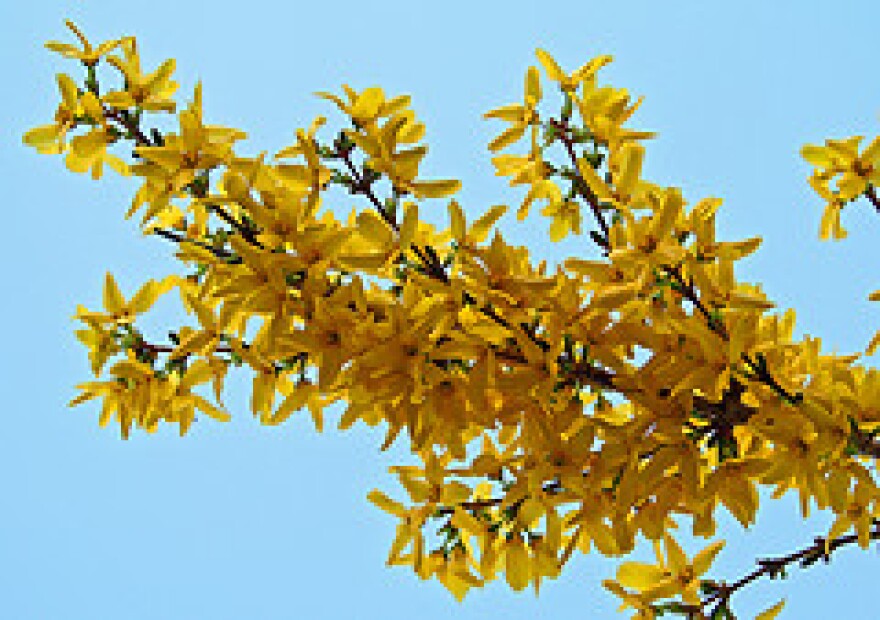Poor Will’s Almanack for the First Week of Middle Spring
The blooming of bright yellow forsythia bushes always announces the arrival of Middle Spring. This is the time that the remaining daffodils and grape hyacinths flower and that wildflower season unfolds in the woods with the blossoming of early violet cress, twinleaf, periwinkle, spring beauty, hepatica and small-flowered bittercress. Early meadow rue and May apples are pushing up out of the ground. Cowslip is budding in the swamp, and leaves grow long on the skunk cabbage. Japanese knotweed, columbine, phlox and lupine emerge in the garden.
When you see forsythia shrubs in bloom, then the first buckeye, apple and peach trees are leafing out. At dusk, the first frogs and toads are singing. Killdeer become common, and woodcocks call near sunset with a nasal sounding "peent." Barn swallows arrive at the barns, and the first baby barred owl hatches.
When forsythia blooms, then farmers are seeding the first of the oats and field corn. In town, the lawn is almost long enough to cut. Then nettles, chicory and leafcup are six to eight inches tall, Asiatic lilies and columbine three to five inches. Ragwort and garlic mustard are forming clumps; some sweet rockets and money plants are getting ready to send out their flower stalks.
Hops vines twine around the honeysuckle. Japanese knotweed catches up with the rhubarb (just about big enough for a small pie). Water rushes and purple loosestrife, water lilies and pickerel plants have suddenly produced foliage in the ponds and streams where small diving water beetles hunt for food.
This is Bill Felker with Poor Will’s Almanack. I’ll be back again next week with notes for the second week of middle spring. In the meantime, find the yellow flowering forsythia blooming in the city or the country, telling you the time of year.



